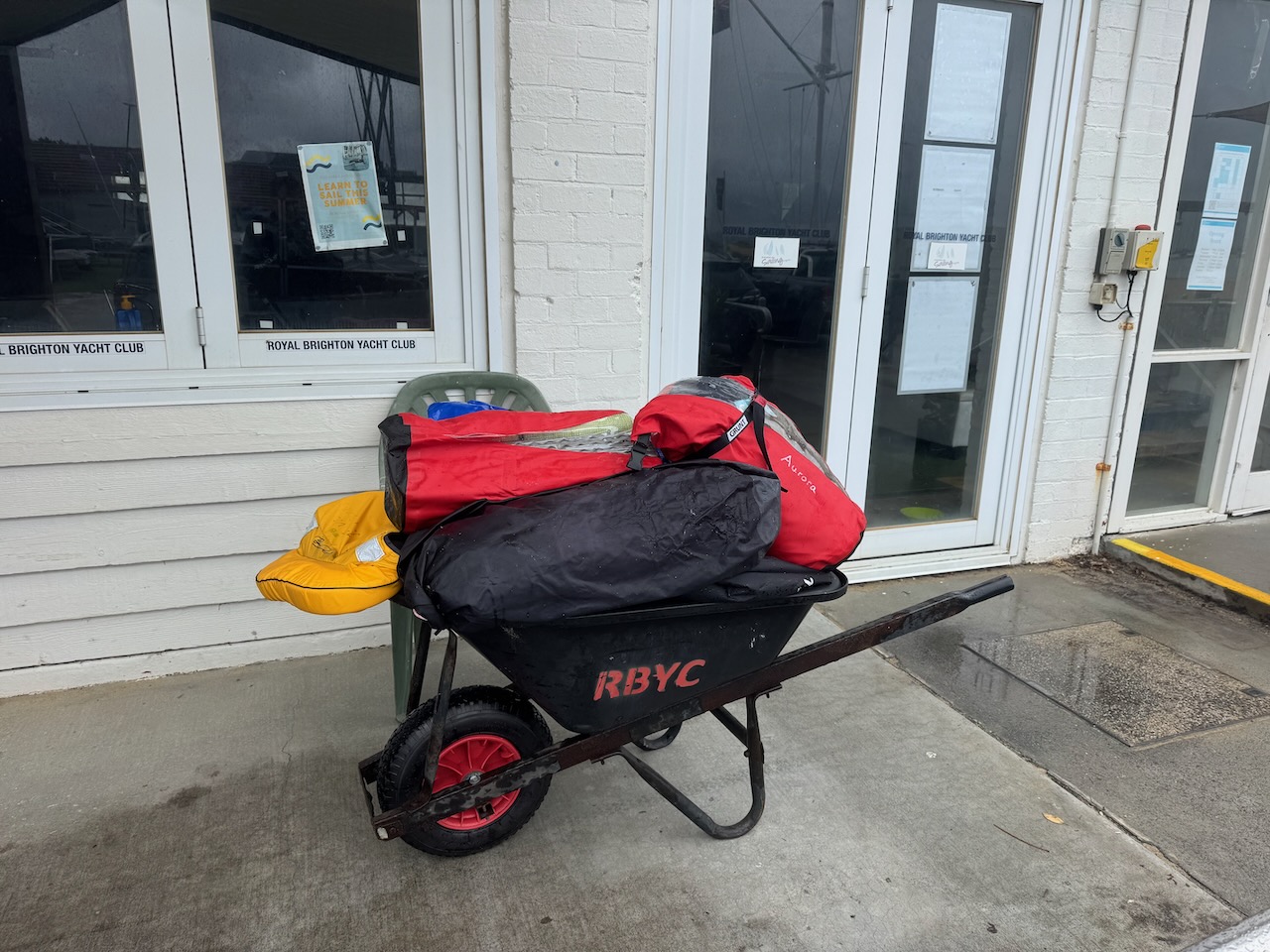Planning for a multi day trip we were looking into if and how we could store all the gear at least for the crew of Aurora on board, including tent, sleeping gear, some water and food, all dry/onshore clothes, some basic office gear (notebook, charts, batteries) boating and safety equipment. It’s a lot of gear even when minimising everything.

All the bags we stored on-board Aurora
We experimented with a few ways on how to add storage and store our gear – here’s what we tested / did:
Foredeck – turned out to be great.
- Main hatch: ropes, anchor, paddles, solar panels, tools, spare parts and some other spare gear fit into the main hatch with space to spare
- Top small hatches, spare shackles and bungees (for sail packup) went into those, with space to spare
- Horizontal hatch – port side: took all the safety gear – flares & smoke, lifevest lights, emergency nav lights and a floating torch
- Horizontal hatch – starboard: emergency snacks
- As none of the compartments are watertight things that shouldn’t get wet went into dry bags – the 2-5$ Bunnings ones; the orange 5L one is perfect for the horizontal hatches and easily holds flares/smoke or lunch and snacks
- We learned about a few challenges on using the foredeck on the trip – that’s for another time.
Under-seat storage: the seats have cut-outs and are hollow – suitable for securing gear.
- Version 1: We ran paracord inside the seats around the screw fittings on both sides of the boat, with the intention to use e.g. carabiners to click in gear; that turned out too cumbersome or not strong enough – however, we left the paracord in as it’s a great system to dummy-cord equipment for normal day sails (like radios, water bottles etc)
- Version 2: we ran 3-4m Grunt tie-down straps (2m+1m or 2m+2m) in a loop though both openings on all 4 seating areas – resulting in a front and a back loop in each area, prefect for strapping in a round dry-bag – which allowed loading a total of 4 dry bags under the seats. As they were too fat to fit under the seats, we were initially concerned that they stuck out too far into the foot area; however they did neither block access to the footstraps nor were they in way in good or strong sailing conditions (when the footstraps were needed). Even better, the bags turned out to be very comfortable to lean against when there was not a lot of wind.
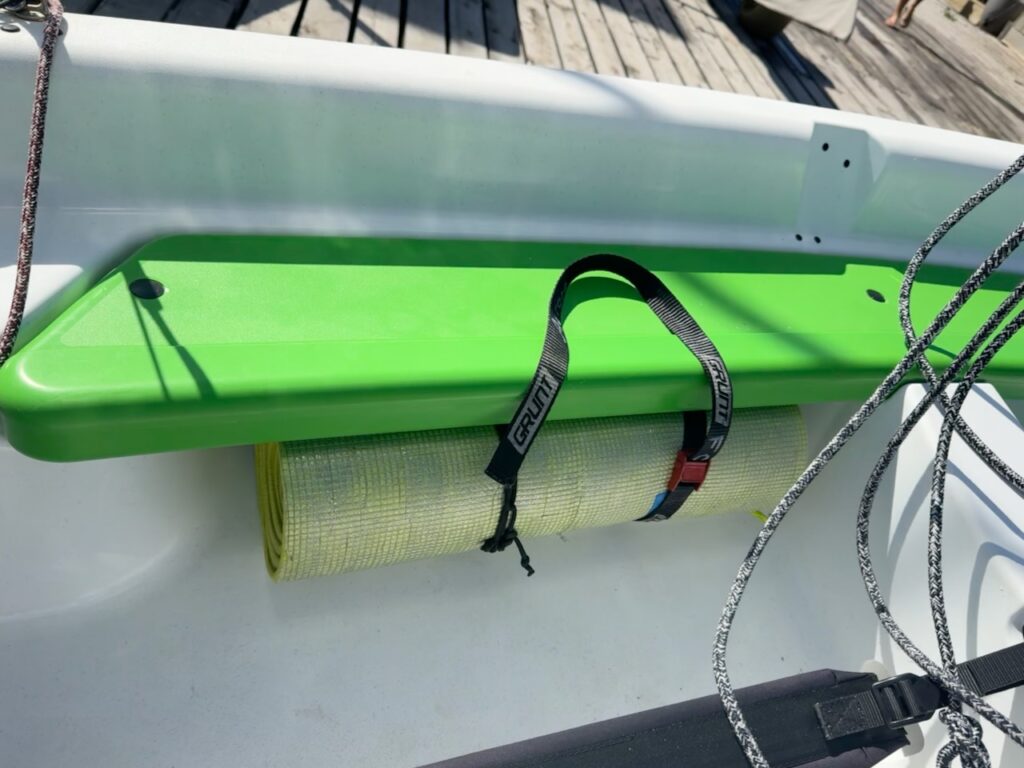


Testing a few storage options
Cross-beam, behind the mast – mind the centreboard.
We used a 90L Gill Race duffel bag to load more gear into the area just behind the mast – the 90L Gill bag fits perfectly into that area and we secured it with one 1m Grunt tie-down strap on either side to the foot-strap attachment point (under the spinnaker sock on the port side). The bag does lay over the centreboard in this way, which can become a problem if it is packed too full; we made sure to pack only both side of the bag and leave the middle empty (e.g. by using smaller dry bags for internal packing) – in this way the bag can be lifted when the centreboard is brought down or up – which worked without a hitch. That bag became the main on-water access bag, for which it is recommendable to have what needs to stay dry in a separate dry bag. Also the (old) design without the centre strap is not waterproof to begin with (that’s for another time).
Behind the mast – one more bag
And finally, on top of the 90L Cross-beam bag, we packed a 35L Gill Backpack and secured that with a 1m Grunt tie-down strap to the mast. In this way it’s not in the way when the 90L one needs to be lifted for centreboard access.
Experimental: on-deck storage on the foredeck – not sure about that
- We didn’t have time to work this one out and it has a few potential challenges.
- We tried to mount an SUP storage bag to the foredeck for additional space;
- This could work for great additional, easy to access storage of gear and even for mounting and charging batteries with the solar panel
- Challenge 1 (unsolved for now): how to secure it properly to the deck – it may require putting attachment points into the foredeck
- Challenge 2 (untested): is it blocking the use of the gib? It may impact sail performance, but it looks like the gib could still easily move over the deck/bag on a tack or gybe.
- Challenge 3 (untested): would the solution for securing it also withstand waves coming over the foredeck? We didn’t initially consider that, but we learned later, that one should.
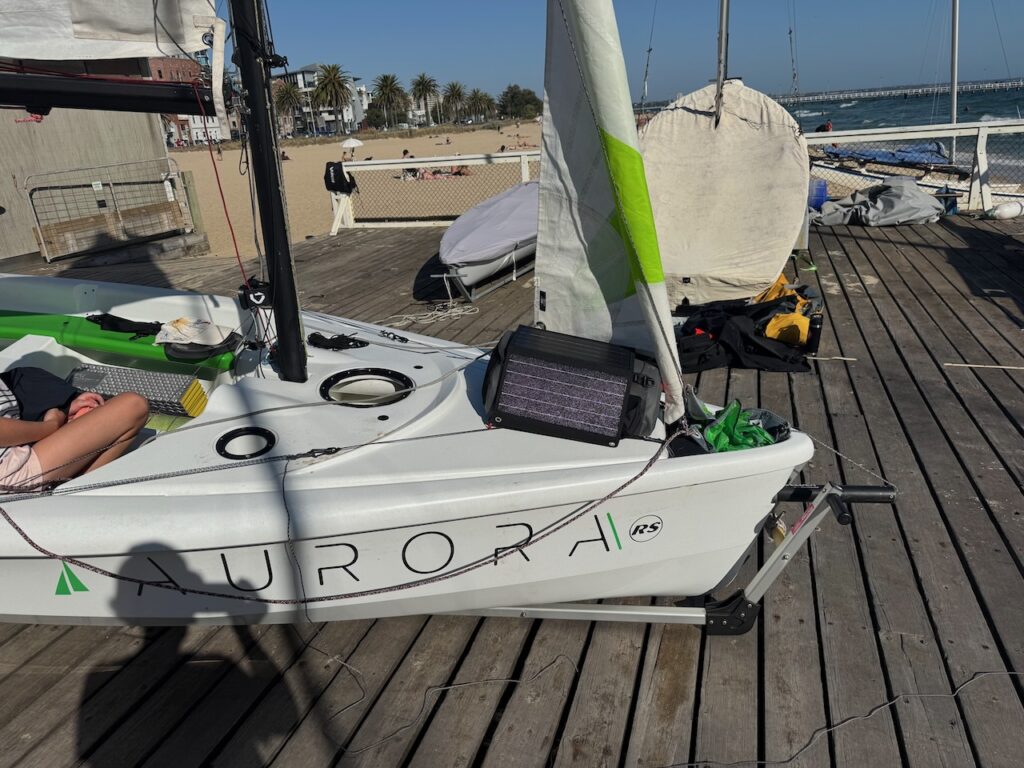
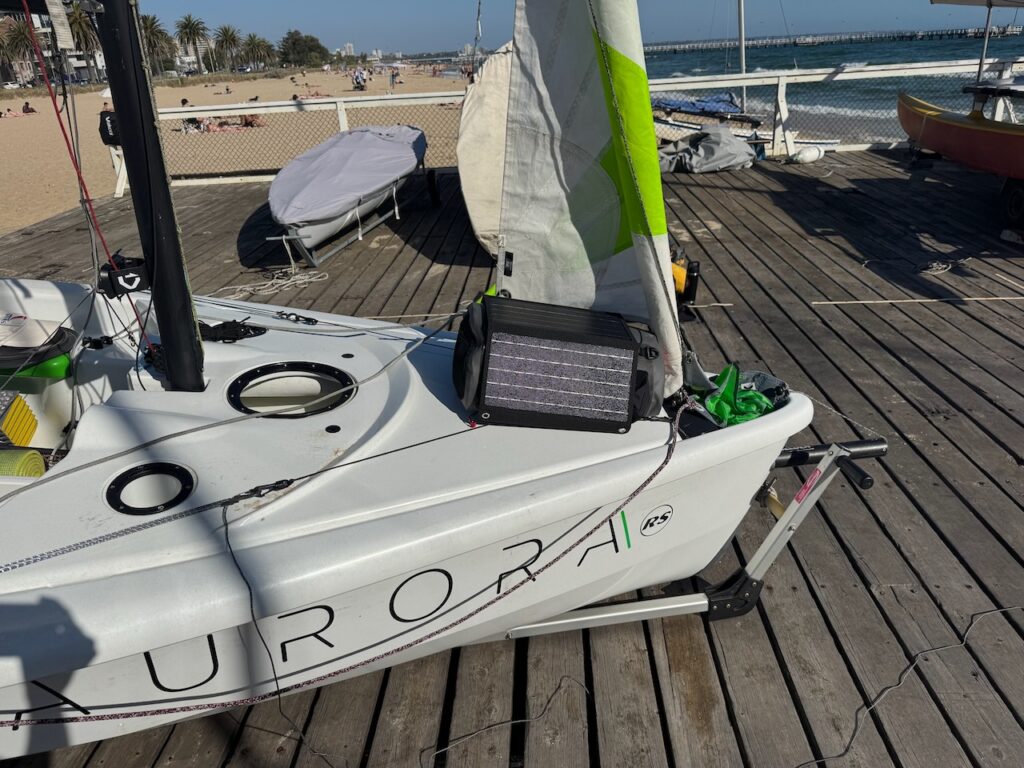

Personal crew day bag storage
- With 3-4 crew, the 3-4 day bags (water, food, sunscreen etc) were probably the least organised part, generally we tried to tie them to the loops and attachement points of the 90L bag and stuffed them behind it under the foredeck or tied them to foot straps in the back.
- A better way may have been to have lunch and sunscreen in one bag (e.g. the 90L one) and water/snacks on the crew (e.g. hip or belt bag)
- Water bladders / camelbaks also turned out to be an excellent hydration solution and could be carried over the pfd.


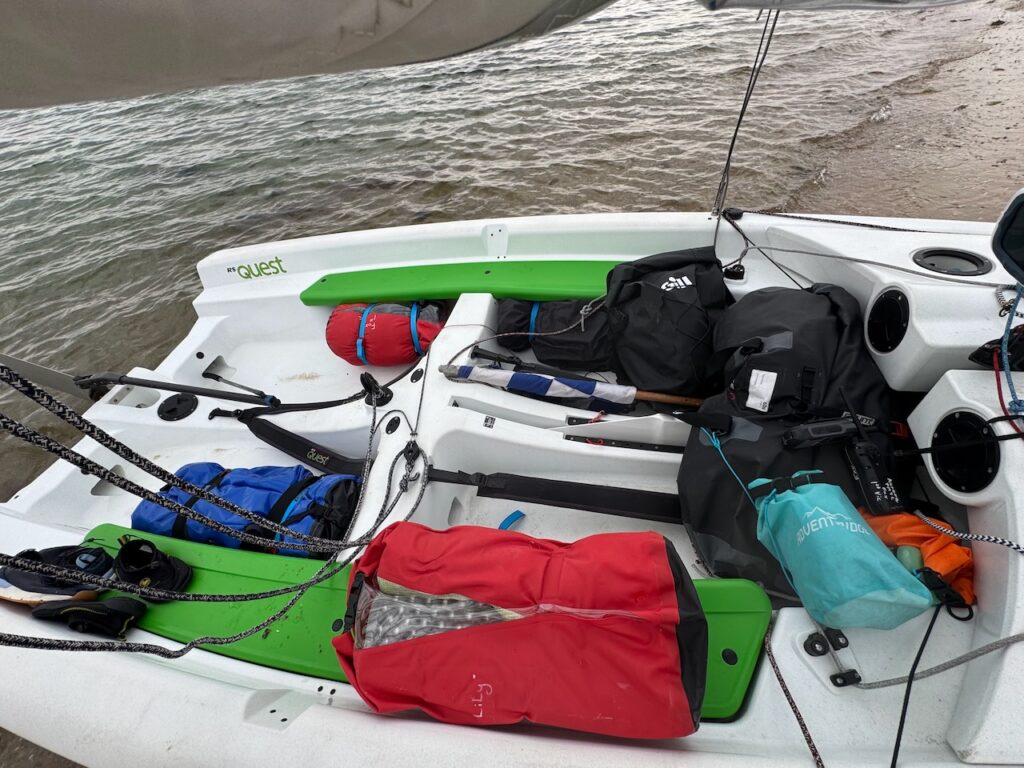
With this setup we got all of our gear onto the boat – fully self-sufficient for a longer journey. Initially, it took some time to work out where which bag went and how to secure it (2m, 3m or 4m straps – just go with 2m+2m for a full dry bag), by the end of the trip it loading took maybe 10 minutes.
The one thing we intended to test – but never did – was a capsize with the fully loaded boat – which is something we will need to do some other time. While we are not concerned about bags moving or taking on water – everything was fully waterproof and secured very well, the additional weight on one hand made the boat extremely stable even in very challenging conditions. On the other hand it may pose a challenge if one needs to get it back up after a capsize.

